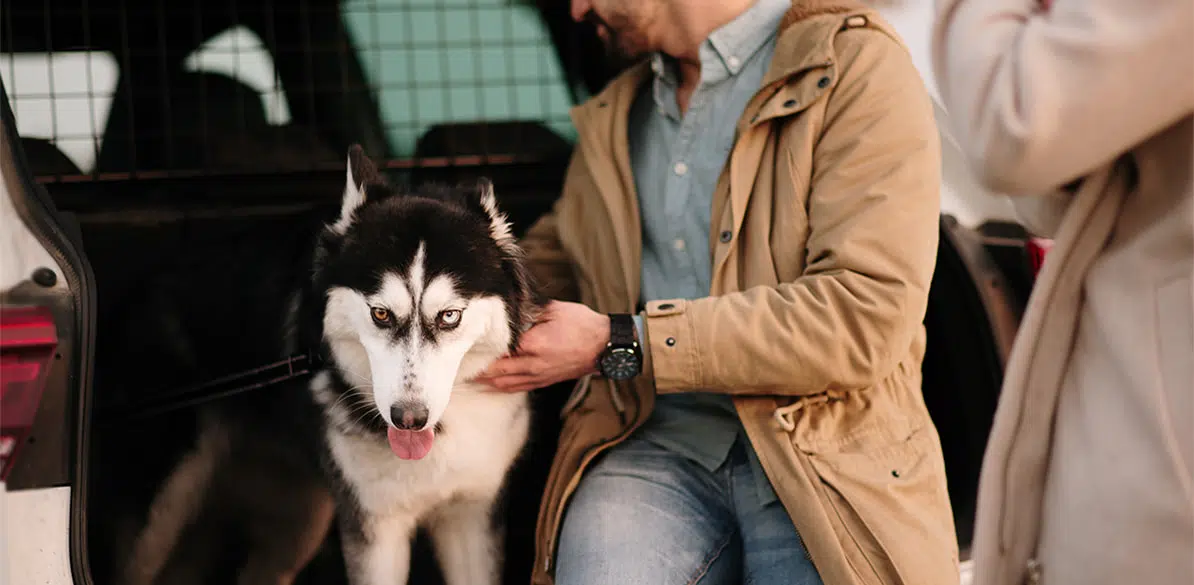How to transport pets in a car
Guidelines and recommendations for safe pet travel in cars

Road Safety
First of all, and we must insist on this, the concept of passive safety does not exist for pets. When we talk about safe pet travel, we do not mean reducing the risk of injury to pets, but rather ensuring that pets do not constitute a danger for the occupants of the car, due to the risk of them being hit. We may or may not agree with this approach, but, as of today, it is how car pet transportation is conceived.
This means that pets must travel in such a way that they can neither disturb the driver nor compromise the safety of the vehicle both during normal driving and in the event of a collision.
In Spain, the first section of Article 18 of the Spanish Traffic Law mentions that animals must be kept in such a way that they do not interfere with the driver, so that he/she may “maintain freedom of movement, have the necessary field of vision, and pay constant attention to driving.”
Based on this principle, there are 5 methods of transporting pets in the vehicle:
- Two-point harness: the harness prevents the pet from moving forward. To prevent the animal from bumping into the seats, the harness should have a short attachment system. In addition, we must ensure that this system has passed a crash test to guarantee that in the event of a collision the harness will not break. In Europe, there is a TUV certification for this type of crash test.
- Carrier on the floor of the vehicle: Small carriers fit in the space between the rear and front seats. As the carrier is blocked in this space, the impact energy is reduced and there is no risk to the car occupants.
- Carrier in the trunk: Larger carriers can be placed in the trunk crosswise to the direction of travel. In this case, as there is a separation space between the pet and the occupants, the risk of injury to the occupants due to a collision with the animal is reduced, while the pet, being in a limited space, also reduces the inertia of the carrier and, therefore, the restraint principle is preserved.
- Separation grid: In vehicles where there is a common space between the seats and the trunk, a metal grid or net can be installed to separate these spaces. This allows the pet to move freely without disturbing the driver. However, in the event of a collision, the animal may have greater inertia and, consequently, the injuries on impact may be greater. In this situation, it is best to combine the carrier with the separation grid.
- Approved trailer: If there is no space in the car, you can use an approved trailer for transporting animals.
Finally, when traveling with animals in the car, we must not forget that they are living beings and that we must follow certain basic rules. Animals can get motion sickness when traveling in the car, so the less they move around, the less likely they are to get motion sickness. Avoiding meals hours before the trip may help reduce motion sickness.
Moreover, pets also need to rest during the journey. We recommend stopping every 2 hours so that they can stretch their legs and move around a bit. The driver can use the opportunity to rest or refuel.
Finally, please keep in mind that pets must always get enough air and ventilation.
